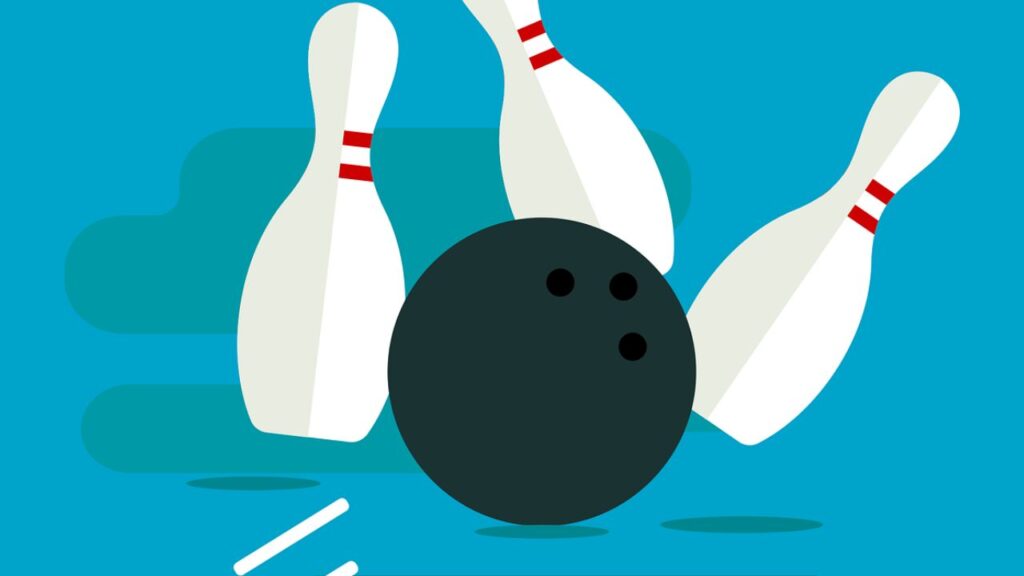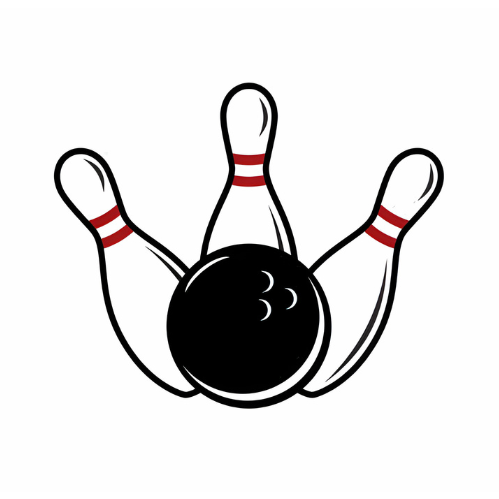A bad break in bowling is an unfortunate incident where a well-thrown ball does not result in the expected number of pins knocked down. It often involves pins leaving a difficult spare.
Bowling is a sport that blends skill, precision, and sometimes a bit of luck. Encountering a bad break can be disheartening, especially when your technique seems spot-on. These unlucky moments test the mental and physical adaptability of players. Bad breaks occur even among professionals, underscoring the unpredictability of the game.
To excel in bowling, players must not only perfect their delivery but also learn how to recover from these challenging situations. Understanding the mechanics behind pin action and the influence of lane conditions can help bowlers minimize the chances of experiencing a bad break. Developing a strategic approach to picking up spares becomes crucial to maintaining a high score throughout a series, ensuring that a single bad break doesn’t derail an entire game.

Challenges Of Difficult Bowling Lanes
Dealing with varied lane conditions is a major challenge for bowlers. Oil patterns differ from one bowling alley to another. This variety can lead to inconsistent ball behavior. For players, it is tough to predict how the ball will react.
A “bad break” often leads to mental blocks. A bowler may lose confidence after a few tough frames. The key is to stay calm and adaptable. By doing so, a bowler can overcome these hurdles. Practice on different lanes can also help. It prepares bowlers for any condition they might face.
Preparation Strategies
Mastering diverse bowling surfaces boosts your game. Practice makes perfect, and it’s vital to roll on different lanes. Each alley has unique oil patterns and textures. These affect your ball’s movement. To adjust, observe the lane’s behavior. Notice how it changes your ball’s path.
Consider the equipment too. Ball weight and material matter. A heavier ball might work on oily lanes. But, you might need a lighter one for dry lanes. Grip and finger hole sizes are also key. Ensure they match your hand for the best control. Shoes with the right slide can improve your game greatly. So, pick your gear thoughtfully.
| Lane Type | Ball Weight | Shoe Type |
| Oily | Heavier | Less Slide |
| Dry | Lighter | More Slide |
Mental Game Adjustments
Building resilience in bowling is key to a strong mental game. Bad breaks can shake a bowler’s confidence. Practicing mindfulness can help one bounce back. It’s about accepting the setback and refocusing quickly. Consider each bad break as a learning opportunity rather than a failure.
To stay focused after a bad break, keep a positive mindset. Deep breathing exercises can steady nerves. Set small, achievable goals for oneself in moments of pressure. This keeps the mind on the present frame. Remember, even professional bowlers face challenges. They too must work on their mental game adjustments.
Technique Tweaks For Tough Conditions
Bowling on tough lanes can be tricky. Fine-tuning your technique makes a big difference. Start by adjusting your approach. This means focusing on your footsteps. Smaller steps help control your swing. Keep your body low and stable.
Next, think about your release. A smooth release is key. Grip the ball lightly. Let the ball roll off your fingers. Practice different release angles. Each lane surface reacts differently. Your ball needs to find the right path.
Learning From The Pros
Studying how the pros play is key to improving your own game. Watch their techniques. Observe their stance, grip, and release. How do they handle pressure? Each detail is critical. Take notes on their strategies during tough splits or strikes.
Seek advice from bowling experts too. Many share insights on posture, aiming, and ball choice. They stress the importance of practice. Drill your footwork and timing. Consistency is vital in bowling. Focus on your weak points. Work on them until they become your strengths. Endurance and focus, keep these in mind.
Community And Support
Joining a bowling league can provide a sense of community. Bowlers often make new friends and share tips with each other. Leagues offer consistent practice and team-building experiences.
Seeking coaching or mentorship can also be very helpful. Experienced coaches can offer personalized advice to improve your game. They identify and correct technical issues. Mentors provide guidance and support to navigate challenges.
FAQ
What Is A Bad Break In Bowling?
A bad break in bowling refers to an instance when a bowler delivers a good ball but ends up with an unfortunate result. This often involves knocking down fewer pins than expected or leaving a difficult spare.
How Can You Avoid Bad Breaks In Bowling?
To avoid bad breaks in bowling, focus on consistent delivery, precise aiming, and proper ball selection. Training to handle spares effectively can also reduce the impact of bad breaks.
What Are Common Bad Breaks In Bowling?
Common bad breaks in bowling include leaving splits such as the 7-10 or a solid pocket hit that results in a ringing 10 pin for right-handed bowlers or a 7 pin for lefties. These are often due to slight misfortunes in pin action.
Can Equipment Cause Bad Breaks In Bowling?
Yes, equipment can contribute to bad breaks in bowling. Using the wrong ball or incorrect surface preparation can affect the ball’s reaction on the lanes, leading to undesired outcomes despite good execution.
Conclusion
Overcoming a bad break in bowling hinges on resilience and technique. Embrace practice and patience to conquer these challenges. Remember, every pro was once a beginner facing similar setbacks. Keep rolling, and let your scores reflect your dedication to improvement.
Strike back with renewed focus and the right mindset next time you hit the lanes. Thank you for reading, and good luck!
